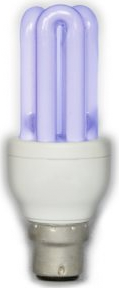 It has been a bitterly cold winter. The temperatures have regularly been on the wrong side of freezing, and the sun has generally set by the time I leave the office. The result is that when I get home in the evenings, the first thing I do is switch on every light and heater available, switch on the electric blanket, and start cooking a nice warm meal on the stove.
It has been a bitterly cold winter. The temperatures have regularly been on the wrong side of freezing, and the sun has generally set by the time I leave the office. The result is that when I get home in the evenings, the first thing I do is switch on every light and heater available, switch on the electric blanket, and start cooking a nice warm meal on the stove.
With all these appliances and lights burning, it got me thinking about the importance of using energy efficient appliances and lighting. I hope to unpack the latter in this article.
A “normal light bulb” is also known as an incandescent light bulb. These are the bulbs that we all grew up with that have a very thin filament inside a glass sphere. They typically come in sizes like “60 watt,” “75 watt” and so on.
The basic idea behind these industrial-age bulbs is simple. Electricity runs through the filament and because the filament is so thin, it offers resistance to the electricity, and this resistance turns electrical energy into heat. There is enough heat to make the filament white-hot, and white-hot equals light.
The problem with incandescent light bulbs is that the heat wastes a lot of electricity. Heat is not light, and the purpose of the light bulb is to produce light, so all of the energy spent creating heat is wasted. As a result, incandescent bulbs are very inefficient. 
But there is an alternative! Thanks to the compact fluorescent bulb, lighting has been one of the great success stories in energy efficiency in the last decade. Like the fluorescent lamps found in commercial buildings, a compact fluorescent bulb is a tube. However, the residential versions are narrower and twisted around like a koeksister.
Below is a table of typical compact fluorescent bulbs and the equivalent incandescent bulbs used to produce the same amount of light:
| Compact fluorescent bulbs | Incandescent bulbs |
| 7 watts | 25 watts |
| 15 watts | 60 watts |
| 18 watts | 75 watts |
| 27 watts | 100 watts |
| 32 watts | 150 watts |
A fluorescent bulb uses a completely different method to produce light. This is a trick similar to the one used by creatures like fireflies and glow-worms, whose bodies contain chemicals that make “cool light” without any heat. There are electrodes at both ends of a fluorescent tube, with various gases inside the tube. A stream of electrons flows through the gas from one electrode to the other. These electrons bump into the mercury atoms and excite them. As the mercury atoms move from the excited state back to the unexcited state, they give off ultraviolet photons. These photons hit the phosphor coating on the inside of the fluorescent tube, and this phosphor creates visible light. It sounds complicated, and without a scientific background, it probably is! The important thing is that the end result is an exceptionally efficient source of light.
There is only one drawback with compact fluorescent bulbs, and that is that they cost a lot more than incandescents. The upside to the higher cost is that they last a very long time. The expected lifetime of most compact fluorescent bulbs is 10,000 hours. In contrast to the long lifetimes of compact fluorescent bulbs, incandescent bulbs are rated to last from 800 to 1,000 hours. It would take 10 or more incandescent bulbs to match the life of one compact fluorescent.
If you decide to get on the energy efficiency bandwagon, lighting is an obvious and easy place to start. So have a look around your house at your existing choice of bulbs; you might just see the light at the end of the energy efficiency tunnel!
Recent Posts
Archives
- June 2025
- May 2025
- April 2025
- March 2025
- February 2025
- January 2025
- December 2024
- November 2024
- October 2024
- August 2024
- July 2024
- June 2024
- May 2024
- April 2024
- March 2024
- February 2024
- January 2024
- December 2023
- November 2023
- October 2023
- September 2023
- August 2023
- July 2023
- June 2023
- May 2023
- April 2023
- March 2023
- February 2023
- January 2023
- December 2022
- November 2022
- October 2022
- September 2022
- August 2022
- July 2022
- June 2022
- May 2022
- April 2022
- March 2022
- February 2022
- January 2022
- December 2021
- November 2021
- October 2021
- September 2021
- August 2021
- July 2021
- June 2021
- May 2021
- April 2021
- March 2021
- February 2021
- January 2021
- December 2020
- November 2020
- October 2020
- September 2020
- August 2020
- July 2020
- June 2020
- May 2020
- April 2020
- March 2020
- February 2020
- January 2020
- December 2019
- November 2019
- October 2019
- September 2019
- August 2019
- July 2019
- June 2019
- May 2019
- April 2019
- March 2019
- February 2019
- January 2019
- December 2018
- November 2018
- October 2018
- September 2018
- August 2018
- July 2018
- June 2018
- May 2018
- April 2018
- March 2018
- February 2018
- January 2018
- December 2017
- November 2017
- October 2017
- September 2017
- August 2017
- July 2017
- June 2017
- May 2017
- April 2017
- March 2017
- February 2017
- January 2017
- December 2016
- November 2016
- October 2016
- September 2016
- August 2016
- July 2016
- June 2016
- May 2016
- April 2016
- March 2016
- February 2016
- January 2016
- December 2015
- November 2015
- October 2015
- September 2015
- August 2015
- July 2015
- June 2015
- May 2015
- April 2015
- March 2015
- February 2015
- January 2015
- December 2014
- November 2014
- October 2014
- September 2014
- August 2014
- July 2014
- June 2014
- May 2014
- April 2014
- March 2014
- February 2014
- January 2014
- December 2013
- November 2013
- October 2013
- September 2013
- August 2013
- July 2013
- June 2013
- May 2013
- April 2013
- March 2013
- February 2013
- January 2013
- December 2012
- November 2012
- October 2012
- September 2012
- August 2012
- July 2012
- June 2012
- May 2012
- April 2012
- March 2012
- February 2012
- January 2012
- December 2011
- November 2011
- October 2011
- September 2011
- August 2011
- July 2011
- June 2011
- May 2011
- April 2011
- March 2011
- February 2011
- January 2011
- December 2010
- November 2010
- October 2010
- September 2010
- August 2010
- July 2010
- June 2010
- May 2010
- April 2010
- March 2010
- February 2010
- January 2010
- December 2009
- November 2009
- October 2009
- September 2009
- August 2009
- July 2009
- June 2009
- March 2009
- February 2009
- February 2008
- February 2007

Recent Comments